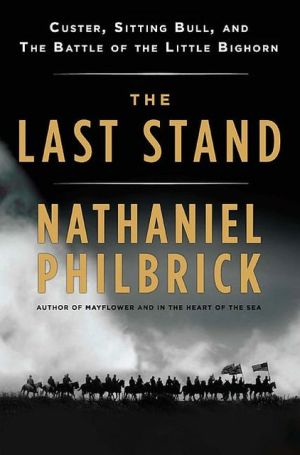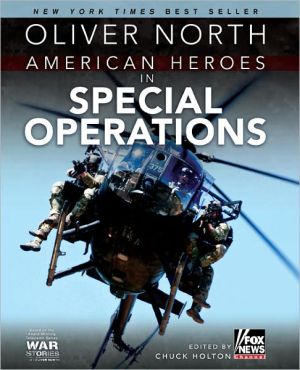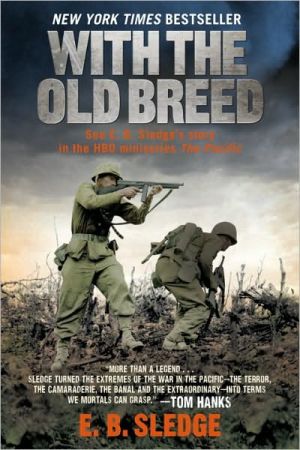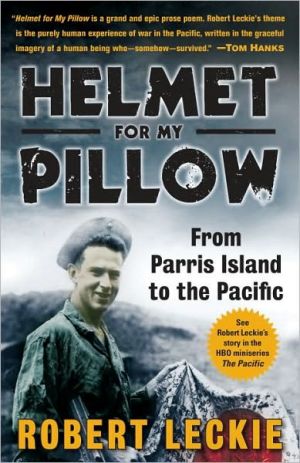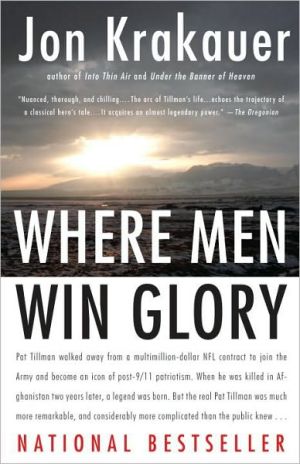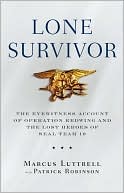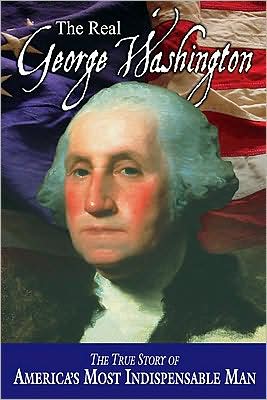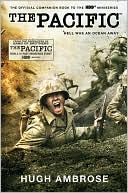The Last Stand: Custer, Sitting Bull, and the Battle of the Little Big Horn
Watch a video\ \ Read discussion questions for The Last Stand.\ The bestselling author of Mayflower sheds new light on one of the iconic stories of the American West\ Little Bighorn and Custer are names synonymous in the American imagination with unmatched bravery and spectacular defeat. Mythologized as Custer's Last Stand, the June 1876 battle has been equated with other famous last stands, from the Spartans' defeat at Thermopylae to Davy Crockett at the Alamo.\ In his tightly structured...
Search in google:
The bestselling author of Mayflower sheds new light on one of the iconic stories of the American West Little Bighorn and Custer are names synonymous in the American imagination with unmatched bravery and spectacular defeat. Mythologized as Custer's Last Stand, the June 1876 battle has been equated with other famous last stands, from the Spartans' defeat at Thermopylae to Davy Crockett at the Alamo. In his tightly structured narrative, Nathaniel Philbrick brilliantly sketches the two larger-than-life antagonists: Sitting Bull, whose charisma and political savvy earned him the position of leader of the Plains Indians, and George Armstrong Custer, one of the Union's greatest cavalry officers and a man with a reputation for fearless and often reckless courage. Philbrick reminds readers that the Battle of the Little Bighorn was also, even in victory, the last stand for the Sioux and Cheyenne Indian nations. Increasingly outraged by the government's Indian policies, the Plains tribes allied themselves and held their ground in southern Montana. Within a few years of Little Bighorn, however, all the major tribal leaders would be confined to Indian reservations. Throughout, Philbrick beautifully evokes the history and geography of the Great Plains with his characteristic grace and sense of drama. The Last Stand is a mesmerizing account of the archetypal story of the American West, one that continues to haunt our collective imagination. The Barnes & Noble Review Philbrick's research seems to have led him to some tantalizing new finds, but how much The Last Stand adds to the agreed-on facts is a judgment best left to those most steeped in the lore. As literature, it isn't in a class with the most acclaimed of all Custer books: Evan S. Connell's 1984 Son of The Morning Star, to which Philbrick pays due tribute in his notes. Yet Connell's treatment of the material was primarily a triumph of style, and his saturnine reductiveness had a grating side. Less ostentatiously aestheticized and more compassionate, Philbrick's account is a better introduction for readers who want a clear picture of what happened and why we obsess about it.
List of Maps xiii\ Preface Custer's Smile xv\ Chapter 1 At the Flood 1\ Chapter 2 The Dream 27\ Chapter 3 Hard Ass 36\ Chapter 4 The Dance 53\ Chapter 5 The Scout 71\ Chapter 6 The Blue Pencil Line 88\ Chapter 7 The Approach 109\ Chapter 8 The Crow's Nest 128\ Chapter 9 Into the Valley 151\ Chapter 10 Reno's Charge 166\ Chapter 11 To the Hill 188\ Chapter 12 Still Point 206\ Chapter 13 The Forsaken 220\ Chapter 14 Grazing His Horses 237\ Chapter 15 The Last Stand 257\ Chapter 16 The River of Nightmares 280\ Epilogue: Libbie's House 304\ Appendix A The Seventh Cavalry on the Afternoon of June 25, 1876 313\ Appendix B Sitting Bull's Village June 25, 1876 317\ Acknowledgments 321\ Notes 325\ Bibliography 419\ Illustration Credits 447\ Index 449
\ Publishers WeeklyPhilbrick here takes on an oft-told tale, replete with its dashing, flawed main character, its historically doomed, noble Native chief, and a battlefield strewn with American corpses. While off his usual stride with a surfeit of unnecessary detail, bestselling author and National Book Award–winner Philbrick (In the Heart of the Sea; The Mayflower) writes a lively narrative that brushes away the cobwebs of mythology to reveal the context and realities of Custer's unexpected 1876 defeat at the hands of his Indian enemies under Sitting Bull, and the character of each leader. Judicious in his assessments of events and intentions, Philbrick offers a rounded history of one of the worst defeats in American military history, a story enhanced by his minute examination of the battle's terrain and interviews with descendants in both camps. Distinctively, too, he takes no sides. In his compelling history, Philbrick underscores the pyrrhic nature of Sitting Bull's victory—it was followed by federal action to move his tribe to a reservation. 32 pages of b&w photos, 18 pages of color photos, 18 maps. (May 4)\ \ \ \ \ Publishers WeeklyPhilbrick here takes on an oft-told tale, replete with its dashing, flawed main character, its historically doomed, noble Native chief, and a battlefield strewn with American corpses. While off his usual stride with a surfeit of unnecessary detail, bestselling author and National Book Award-winner Philbrick (In the Heart of the Sea; The Mayflower) writes a lively narrative that brushes away the cobwebs of mythology to reveal the context and realities of Custer's unexpected 1876 defeat at the hands of his Indian enemies under Sitting Bull, and the character of each leader. Judicious in his assessments of events and intentions, Philbrick offers a rounded history of one of the worst defeats in American military history, a story enhanced by his minute examination of the battle's terrain and interviews with descendants in both camps. Distinctively, too, he takes no sides. In his compelling history, Philbrick underscores the pyrrhic nature of Sitting Bull's victory—it was followed by federal action to move his tribe to a reservation. 32 pages of b&w photos, 18 pages of color photos, 18 maps. (May 4)\ \ \ Booklist[A] compellingly readable rendition of the famous battle . . . that should rivet [Philbrick's] audience.\ \ \ \ \ \ Library JournalAfter 2006's eye-opening account of the fanatical Pilgrims in Mayflower, Philbrick tackles another American legend. Neither the golden-haired general nor the Indian chief here is the bloodthirsty warmonger often portrayed in other accounts. Both are top soldiers and natural leaders zealously looking out for their respective peoples' interests. There have been so many contrasting accounts from both sides over the years that's it's difficult to get a truthful picture of what transpired on June 25, 1876, along the banks of the Little Bighorn River. There was also such infighting and backstabbing among Custer's senior officers that even their accounts are highly suspect. Philbrick therefore incorporates multiple perspectives for a very round portrait of events. Custer's fatal errors were in divvying up his already meager lot of mostly inexperienced troops into smaller units for a multiangled attack and launching an assault without first appraising the behemoth enemy force. VERDICT More than a detailed chronology of events—at which it excels—this book is an in-depth portrait of the two combatants—it's Sitting Bull's story as much as Custer's. Both shared tragic and triumphant lives indelibly woven into the fabric of American lore. Philbrick humanizes history, not only putting a recognizable face on the players in one of our nation's most notorious events but also providing insight into their hearts and minds. [See Prepub Alert, LJ 1/10.]—Mike Rogers, Library Journal\ \ \ \ \ Kirkus ReviewsA master storyteller's vivid take on "one of the most notorious military disasters in U.S. history."In the centennial year of 1876, President Grant, intentionally slighting George Armstrong Custer, placed General Alfred Terry in command of the Seventh Cavalry's campaign to force Sitting Bull's Sioux and Cheyenne followers out of the Black Hills and onto reservations. For Custer, the country's most famous Indian fighter, a greater indignity awaited. Philbrick fans, accustomed to his invigorating treatments of American history, will happily recognize an unaltered talent for fresh insight as he tackles one of the most written-about events ever: the Battle of the Little Bighorn. The author opens with an unexpected story about the riverboat journey of legendary pilot Grant Marsh up the Missouri and Yellowstone tributaries to provision the Seventh Cavalry and closes by following the harrowing return in the battle's aftermath that carried wounded soldiers to the Dakota Territory's Fort Lincoln. Philbrick (Mayflower: A Story of Courage, Community, and War, 2006, etc.) dwells instructively on the importance of the strikingly peculiar landscape-the rolling hills, depressions, heat and dust that contributed so mightily to the usual fog of war. The author frankly acknowledges the difficulty of piecing together the battle's details, weighing contemporaneous accounts against those collected well after, resolving repeated inconsistencies as to how it unfolded. He establishes confidence in his judgments, however, by his meticulous portraits of the chief antagonists, rejecting caricatures of Custer, from blameless martyr to vainglorious fool, and of Sitting Bull, from murdering savage to Native-Americansaint. Philbrick supplements his nuanced appraisal of each man-they had surprising similarities-with deft depictions of subordinate players, including the drunken Major Reno, the brave but vindictive Captain Benteen and the calculating Terry, more responsible than any single individual, the author persuasively argues, for the calamity. A stirring, perceptive retelling of an endless fascinating battle. Agent: Stuart Krichevsky/Stuart Krichevsky Literary Agency\ \ \ \ \ The Barnes & Noble Review"More than anything else, he wanted to be remembered." That's how Nathaniel Mayflower) Philbrick sizes up George Armstrong Custer toward the end of The Last Stand: Custer, Sitting Bull and The Battle of The Little Bighorn, and no one will dispute that America's ultimate glory hound got his wish. Too bad the victorious Lakota and Cheyenne weren't feeling respectful after wiping out his command in what's now Montana on June 25, 1876. They not only punctured the dead Custer's eardrums because he "wouldn't listen," but -- in a detail long suppressed by decorum -- jammed an arrow up the corpse's penis.\ Only his own folly was to blame. But to quote an American poet (well, he was) named Ronald Reagan, who in 1941 played the young Custer opposite Errol Flynn's J.E.B. Stuart in the wildly implausible Santa Fe Trail, facts are stupid things. Idealized in the Budweiser promotional lithograph that once decorated the nation's saloons, restaged to gallant or belittling effect in too many movies to count, the prairie Götterdämmerung we know as "Custer's Last Stand" has endured, above all, as an iconic American image. It's the perfect middle panel in an imaginary triptych whose bookends are Washington crossing the Delaware and the flag-raising on Iwo Jima.\ But the larger enterprises the other two symbolize are less morally iffy, which is why Custer's main contribution to winning-of-the-West triumphalism was providing it with a martyr. For 19th-century audiences, Sitting Bull's morose participation in the reenactments that climaxed Buffalo Bill's hugely popular Wild West show in the 1880s must have seemed like the equivalent of the real Pontius Pilate performing in a passion play.\ Today, Custer has long since become an embarrassment to educated white Americans. But the effort we've put into debunking him amounts to admitting we're stuck with him. From the Goldilocks hairdo he'd actually rid himself of before Little Bighorn to the final, almost certainly inaccurate, tableau of The Last White Man Standing as the "hostiles" close in, he's the horse's ass we rode in on.\ Unsurprisingly, the Custer literature is huge. An online search tosses up almost twice as many titles as there are books on the Titanic's sinking -- another shock, as Philbrick notes, that also caused a society "drunk on its own potency and power" to "wonder how this could have happened."\ Part of both disasters' fascination is how much we know about everything but the climax. Events aboard the Titanic after the lifeboats left are as mysterious as the last moments of Custer and the men who died with him after he pulled off his hat, shouted "Hurrah, boys, we've got them!" and vanished from non-hostile sight. That's despite plenty of firsthand testimony from, so to speak, the iceberg, since the many Indian accounts of the battle have a maddening way of giving short shrift to white people's priorities in the questions they leave unanswered.\ Philbrick's research seems to have led him to some tantalizing new finds, but how much The Last Stand adds to the agreed-on facts is a judgment best left to those most steeped in the lore. As literature, it isn't in a class with the most acclaimed of all Custer books: Evan S. Connell's 1984 Son of The Morning Star, to which Philbrick pays due tribute in his notes. Yet Connell's treatment of the material was primarily a triumph of style, and his saturnine reductiveness had a grating side. Less ostentatiously aestheticized and more compassionate, Philbrick's account is a better introduction for readers who want a clear picture of what happened and why we obsess about it.\ One of his assets is his unprejudiced curiosity about the main players' psychologies. The snideness afforded by hindsight isn't his thing. His gift for narrative organization lets him weave in asides and biographical nuggets that add context without blurring the complicated sequence of maneuvers and decision-making leading up to the final debacle, all the way from Washington -- where the master plan to subdue the recalcitrant Sioux was hatched -- to Custer's reckless idea of dividing his command in three to attack an enemy camp whose strength and even location he hadn't properly reconnoitered.\ Another virtue is Philbrick's concentration on how Custer's last campaign must have registered as experience. We're kept vividly aware of the confusing topography, the thirst, heat and stench, the wearisome fussing with horses and equipment, the loneliness of the whole situation. This first-rate popular historian is primarily known for his seafaring books; indeed, The Last Stand is the first time he's ventured this far from salt water. But that background turns out to be unexpectedly good preparation for understanding "two self-contained and highly structured communities" on the move in an otherwise desolate landscape: the Seventh Cavalry and the Native American tribes gathering on the Little Bighorn.\ By 1876, Custer was a renowned enough Indian fighter to have published a bestselling autobiography two years earlier: My Life on The Plains, renamed "My Lie on The Plains" by one skeptic who'd served under him. But after the laurels he'd won as the Civil War's youngest and most dashing model of a modern major general, his reduced peacetime rank and constricted room for initiative left him chafing. Mistrusted by his superiors, he had even more fractious relations with two of his subordinates: Major Marcus Reno and Captain Frederick Benteen, who didn't much like each other either. This was fateful, since Reno and Benteen were in charge of the Seventh Cavalry's other two columns once Custer's contingent rode off.\ Both of them are fascinating figures in their own right. Reno has often been faulted for cowardice, but Philbrick blames the bottle instead. That's something of a chicken-and-egg question, given Reno's behavior at Little Bighorn. Not only was he too drunk during most of the battle to exercise command more than feebly, but he recuperated afterward by buying (and, presumably, downing) "an astonishing eleven gallons of whiskey over a twenty-two-day period."\ A hard drinker himself, Benteen -- the source of the "My Lie on The Plains" crack -- was a very different kettle of fish otherwise. Cantankerous and sardonic, he saw himself as a hard-boiled professional disgusted by Custer's "pretentious silliness." Yet his chilling satisfaction at the sight of Custer and his inner circle dead on the field -- "The Lord, in His own good time, had at last rounded the scoundrels up" -- has a touch of Iago. "In Russia," Benteen once bragged, "they'd call me a Nihilist sure!"\ Custer's plan was apparently to duplicate his success eight years earlier against Black Kettle's Cheyenne band on the Washita, one of those engagements white people called a battle and Indians called a massacre. Splitting his command then as now, he'd destroyed the Indians' village -- populated mainly by women and children -- and devastated their pony herd, then gotten away before their warriors could hit him back.\ We have one unmatched authority's word for it that he came amazingly close to doing it again. "We thought we were whipped," Sitting Bull said, recalling the moment when Custer's men were first spotted riding toward the valley sheltering the Indian camp's vulnerable noncombatants.\ It didn't work out that way. Meant to support Custer's attack, Reno's own bungled charge had been repulsed. That panicked him and his men into a retreat that became a skedaddle before the survivors took refuge on a promontory known today as Reno Hill. Meanwhile, Benteen, sent with his three companies by Custer on an expedition with no recognizable purpose except to cheat him of his share of the expected glory, had turned back from his fool's errand even before getting a message from Custer to "Come quick." The last communication from him, it was brought by a lucky bugler named Martin or Martini.\ Far from "coming quick," Benteen didn't come at all after finding Reno. In retrospect, this was probably sensible. Not only did Benteen have no idea what he'd have been riding into, he and Reno were soon surrounded and fighting for their lives. But considering that Benteen's deepest grudge against Custer was a suspicion that he'd abandoned another officer to a lonely death at the Washita back in 1868, his refusal to even try going to Custer's aid is arresting.\ In fact, any self-respecting Elizabethan would milk that moment for a "Fair brain, foul heart" soliloquy, especially since the gunshots and dust clouds in the distance were making it likely Benteen's C.O. had run into more than he'd bargained for. The appearance early on June 26 of a large number of Lakota and Cheyenne braves dressed in cavalry uniforms whose former owners had no further use for them was an even more definite hint.\ Ironically, the fight on Reno Hill, once Sitting Bull's warriors got done dispatching Custer and encircled the Seventh Cavalry's remainder, was the part of the Battle of Little Bighorn that does qualify as a "stand." But not a last one, since a relief column rescued Reno, Benteen, and their men late on June 26. With a wealth of survivors' reports to draw on -- just what's lacking in Custer's case, obviously -- The Last Stand's minute-by-minute account of their ordeal is packed with memorable images and incidents, from the hiss of escaping gas as fresh bullets strike a horse's bloated body to one wounded trooper's attempt to take a canteen of precious water at gunpoint. Only then does Philbrick turn back to Custer's fate.\ Contradicting the folklore, the odds are good that whatever happened was unheroically over in all of 20 minutes. Viewing the scattered dead on June 27 ("You could take a handful of corn and scatter it over the floor and make just such lines"), Benteen concluded that it had been "a panic -- a rout." In other words, the sort of encounter Indians called a battle and white people called a massacre.\ Some evidence suggests that Custer himself may have become a casualty before the "Last Stand," going a long way toward explaining the collapse. Another possibility is that, to avoid capture and torture, he was shot near the end by his own brother Tom -- who died with him, as did a third Custer brother (Boston). But all anybody knew for certain was that there all 210 of them were, many mutilated and nearly all stripped naked. Hence one junior officer's famously anguished cry: "Oh, how white they look! How white!"\ Philbrick isn't especially successful when he tries to go macro. His attempt to link Custer's myth to other celebrated Last Stands -- the Alamo, Thermopylae -- doesn't acknowledge the problem that both of those were calculated sacrifices, not botched overreach. His occasional lapses into indicting "arrogance," American imperialism, and the like come off trite and forced. But that's mainly because his own storytelling skills make such rhetoric redundant.\ He's much better at sketching the dynamic United States that was turning Custer into yesterday's hero even as it lionized his exploits. The 1876 Centennial Exhibition, whose grand opening in Philadelphia predated the Little Bighorn by under two months, lets Philbrick get a lot of mileage just from listing the modern marvels introduced there: "Hires root beer, Heinz ketchup, the Remington typographic machine (later dubbed the typewriter), and Alexander Graham Bell's telephone." That "later dubbed" parenthesis is a nice touch.\ Readers with a taste for incongruous symbolism may be even happier to learn that one of the Seventh Cavalry's "more ornery mules" was named Barnum, after the circus impresario. Loaded with valuable ammunition boxes, he decided to change sides during the fight on Reno Hill, which may be the best joke in this grueling saga. The soldier who headed off Barnum's dash toward the Indians won a Medal of Honor for it, too.\ In a sense, thanks to Buffalo Bill, Sitting Bull ended up joining Barnum's side instead. His share of The Last Stand falls short of the full-scale dual portrait implied by the book's subtitle, but the contrast between "Custer's hyperactive need to do too much" and his opponent's methodical patience is both illuminating and good drama. Not only the shrewd strategist we've met before -- the jolt his victory gave 19th-century prejudices is evident in the hysterical rumors that he was either a renegade West Pointer or, even funnier, had learned French to study Napoleon's maxims -- Sitting Bull emerges here as a first-rate politician, skilfully managing different factions in his unique role as war chief to an alliance of frequently disputative tribes.\ With the odd exception of Crazy Horse, who gets only glancing treatment, Philbrick is equally good on the lesser personalities on the Indian side. They're convincingly contentious, complicated human beings, blessedly lacking in the mystique that Son of The Morning Star, for all its sophistication, didn't exactly work overtime to dispel. Philbrick does best by Gall, the Hunkpapa chief whose friction since childhood with Custer's favorite scout, Bloody Knife, is a reminder of how peculiarly intimate the frontier wars were. For that matter, so is the name of the only Seventh Cavalry horse to survive the last stand, found "hit by seven different bullets and arrows" and lovingly cared for until his death 15 years later: Comanche.\ Experts may find more to quarrel with here than I did. But even if Philbrick has everything right, that doesn't make The Last Stand the "definitive" book on the Little Bighorn, any more than Connell's was. There clearly ain't no such animal, and never will be. What may be most to this one's credit is a humanity that can make even inveterate Custer-haters pity the men who got stuck following him, as did at least one Sioux warrior at the time. "I felt really sorry for them, they looked so frightened," Standing Bear later told his son. "Many of them lay on the ground, with their blue eyes open, waiting to be killed."\ --Tom Carson\ \ \
